
X-ray astronomy is a relatively new science as we have needed satellites to do it; these have only been around since the 1950's. X-rays have a tendency to go through things compared to visible light, but they are also fairly easily absorbed - a few millimetres of bone or a few metres of air will stop them. This is good for us, as large doses of X-rays are dangerous and can cause cell mutations, and there is plenty of air between us and space. So we are lucky that the Earths' atmosphere blocks X-rays from reaching the Earths' surface. This is because the atmosphere contains water which is opaque to X-rays. If all the water were in the atmosphere were condensed onto the surface, it would form a layer 10 m deep. However this does mean that we need to get into orbit to look at X-rays from space. The picture shows how different wavelengths of electromagnetic radiation ("light") are absorbed by the atmosphere. Therefore we need satellites to be able to do any X-ray astronomy.
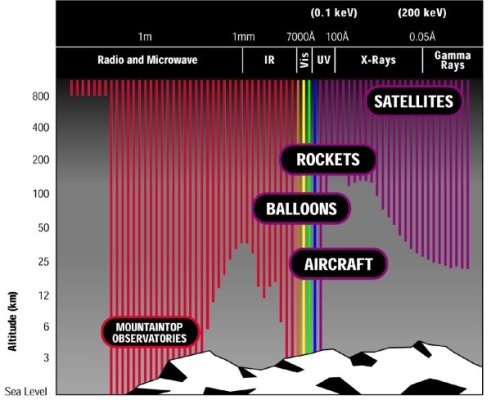 |
| The depth of penetration of different frequencies of light into the Earths atmosphere. This shows why we need satellites for X-ray astronomy. (Image courtesy NASA) |
The first attempts at X-ray astronomy were just to see if there was any form of X-ray radiation in space. The instruments were simple detectors carried aloft on rockets which then parachuted back down to Earth. They detected X-ray emission from the Sun. The surface of the Sun is relatively cool (5800K) and so doesn't produce many X-rays, but is therefore a very good emitter of visible light. For an object to emit most of its light in X-rays its temperature has to be ~6,000,000 degrees. However the Sun is surrounded by a corona which is a much stronger emitter of X-rays as it is super-heated to ~1,000,000K. Modern images of the Sun in X-rays using the Japanese Yohkoh satellite are shown below.
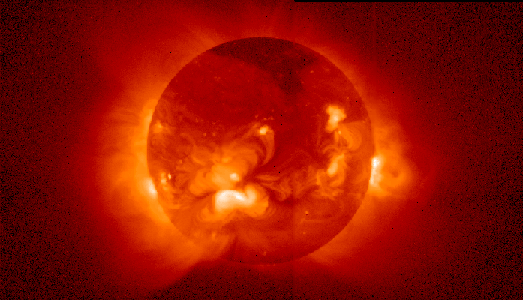 |
| The extended Corona of the Sun as seen in X-ray by the Yohkoh Satellite. (Image courtesy Yohkoh) |
Subsequent to this success more missions were sent up to try and detect reflected X-rays from nuclear weapons tests. From the emission from the Sun it had been determined that there would be no detectable emission from any normal stars so it was not worth looking elsewhere.
Then in 1962 a simple X-ray detecting payload went up from New Mexico to try and detect reflected X-ray emission from the Moon. The rocket was above 80 km for 5 minutes and 50 seconds and reached a maximum height above the Earth's surface of 225 km. The payload rotated in space and it was expected that there would be peaks in the X-ray emission as it pointed at the Sun and the Moon. These were detected, but there was something else there that was much brighter, coming from the constellation of Scorpius and was called Sco X-1. It is the brightest object in the X-ray sky, much brighter than the full Moon. Suddenly there was the possibility that there were things in space that could be researched with X-rays. Giacconi won the Nobel Prize for Physics in 2002 for his development of X-ray astronomy.
This mission also discovered an X-ray background - a hard X-ray sky-glow which peaks at the galactic poles. This comes from the "Local Bubble" which surrounds the Solar System. There is an Extra-galactic X-ray Background which has been a topic of active research and which is thought to be a result from sources which have not been resolved with current X-ray telescopes.
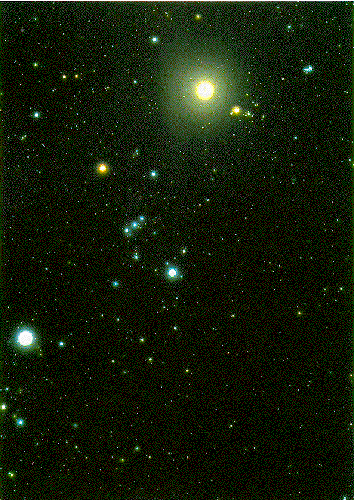 | 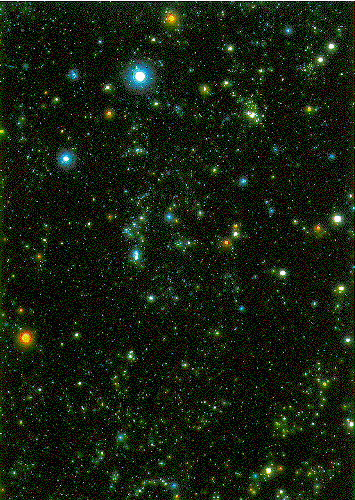 |
| The Constellation of Orion as seen in Optical Light. | The same region as seen in X-rays. |
The image on the left shows the constellation of Orion in with the Moon to the top. On the right is the same region of the sky as imaged in X-rays. There are still many objects in the image all giving off X-rays. You can see the Moon if you know where to look - it does reflect some X-rays from the Sun (see section on the X-ray Background of a clearer image). You can also see Sirius as a bright X-ray source; however it is not the normal bright star (Sirius A) which you see in the X-ray image, it is its companion, the much smaller and hotter White Dwarf Sirius B. It was known that Sirius A had a companion that was faint in visible light as its passage across the sky wobbled. However it was not until much later that the companion was imaged. It is the remnant of a much larger star that came to the end of its life and died by throwing off its atmosphere and leaving its naked, hot core to cool into space - it is hot enough to emit X-rays.
The bright blue source to the top of the X-ray image is the Crab Pulsar - another dead star, but this is what is left of one which died in a much more spectacular fashion. The star exploded when it ran out of fuel, and the core collapsed into a neutron star - a gigantic atomic nucleus about 3 km across. This is a very hot star which causes the gas cloud created as the star died to glow as a nebula - the Crab Nebula.
Although most X-rays come from outside of the Solar System, there are some sources in our very local Universe as well. We have already seen that the Sun is a source of X-rays and it causes most of the X-rays seen in the Solar System. The Aurorae on Earth are sources of X-rays, as are those on Jupiter and Saturn. The Moon reflects some of the Solar X-rays which are detectable. The image below shows the difference between the sunlit and dark sides of the Moon and also the fact that there is an X-ray background on the sky. Mars has been detected in X-rays for the same reason.
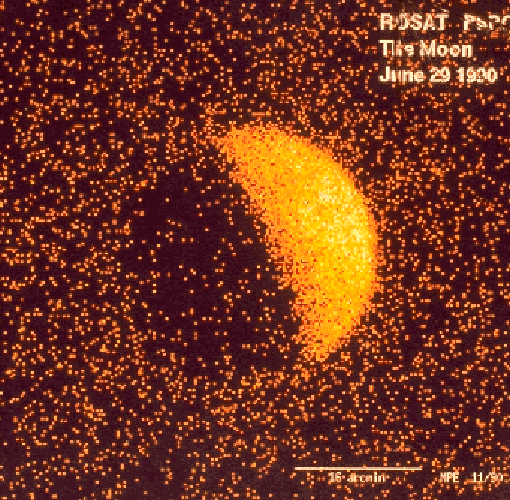 |
| The Moon as seen by ROSAT. |
BACK: Introduction to X-rays UP: Introduction to X-rays NEXT: What we get from X-rays